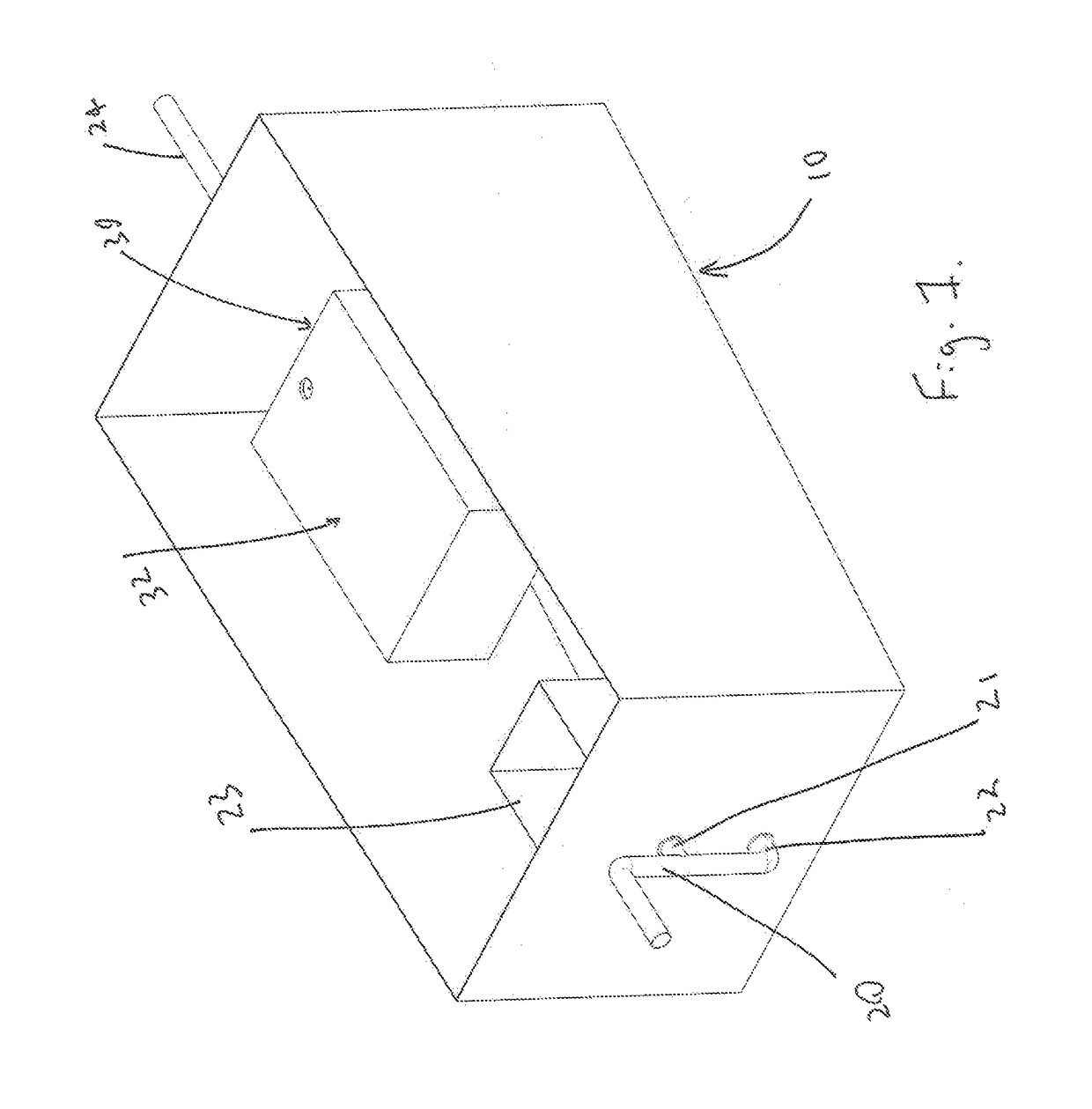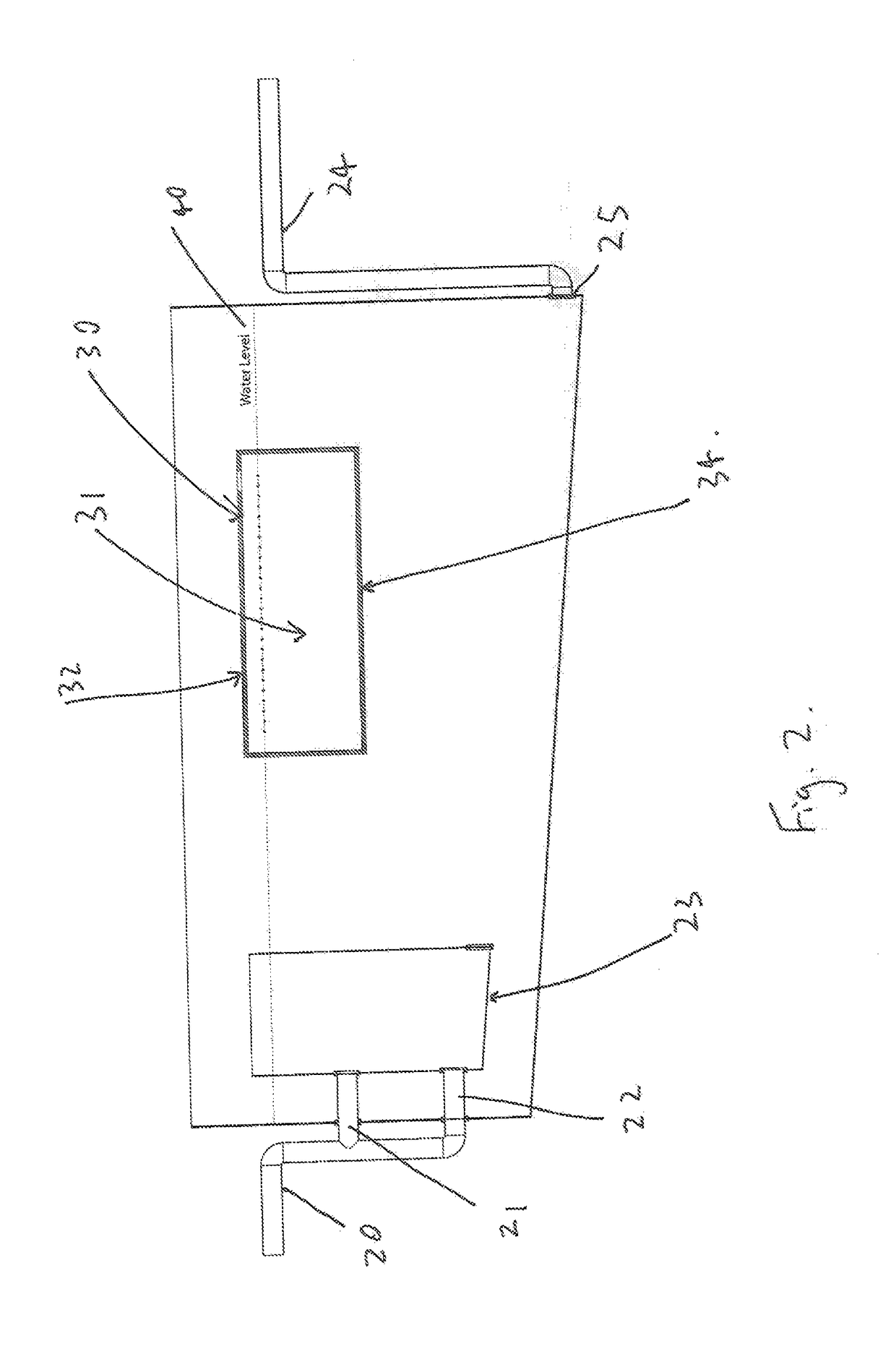Waste stream decontamination system
- Summary
- Abstract
- Description
- Claims
- Application Information
AI Technical Summary
Benefits of technology
Problems solved by technology
Method used
Image
Examples
Embodiment Construction
[0151]Referring now to the drawings and specifically FIGS. 1 and 2 inclusive and initially FIG. 1, which shows a front top right isometric view of a 3D representation of an assembled waste stream decontamination system of the invention, being in particular a grease trap, illustrated generally by reference number 1. The assembled grease trap 10 shown is generally rectangular in shape is comprises of four side walls A-D, consisting of front wall A, rear wall B and two side walls C and D respectively, bounded by bottom wall E and defining a grease trap reservoir for holding waste stream liquid of a predetermined volume. The bottom wall E of the grease trap 10 shown has a downward slope aware from the inlet side of the reservoir. This means that during use over time any non collected solid particulate flows towards the rear end of the reservoir assisting in a full clean out if needed. In use, a top wall or cover F is positioned on top of the four side walls A-D, effectively closing off ...
PUM
 Login to View More
Login to View More Abstract
Description
Claims
Application Information
 Login to View More
Login to View More - R&D
- Intellectual Property
- Life Sciences
- Materials
- Tech Scout
- Unparalleled Data Quality
- Higher Quality Content
- 60% Fewer Hallucinations
Browse by: Latest US Patents, China's latest patents, Technical Efficacy Thesaurus, Application Domain, Technology Topic, Popular Technical Reports.
© 2025 PatSnap. All rights reserved.Legal|Privacy policy|Modern Slavery Act Transparency Statement|Sitemap|About US| Contact US: help@patsnap.com


